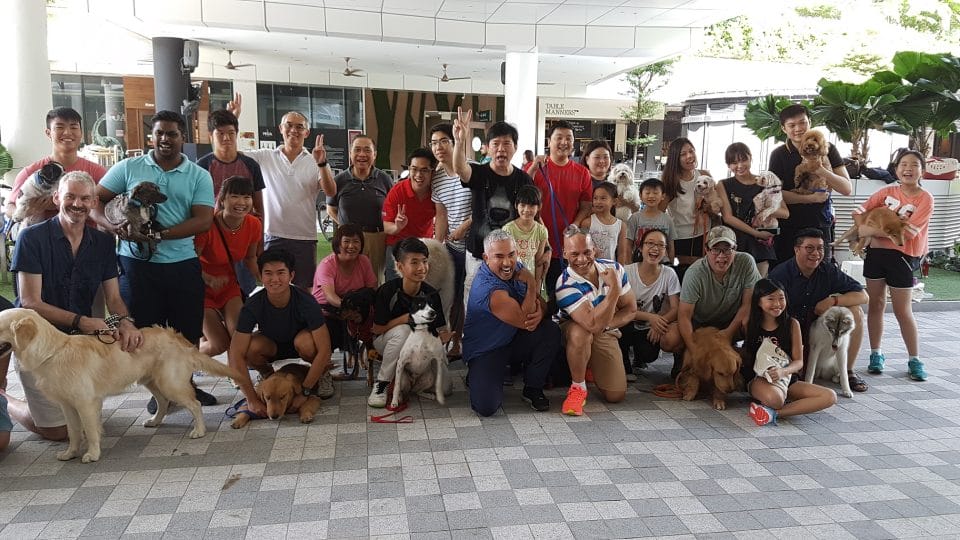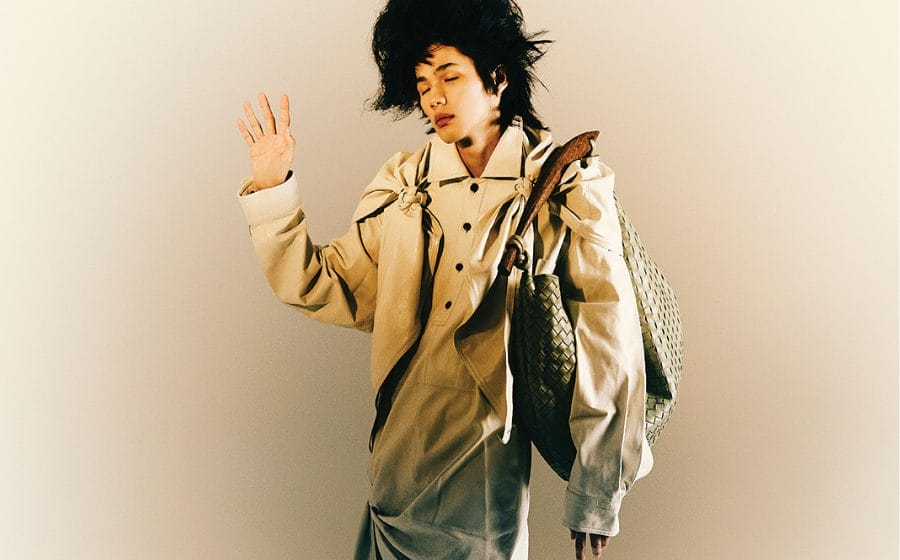
According to Patrick— Singapore’s most acclaimed dog trainer and the founder of Waggies Dog School — there are several red lights to consider when one adopts a dog regardless of its age.
People often come to me to help solve behavioural problems with their dogs. The number one being potty training for new puppies, and other issues like excessive barking, biting, jumping on people, aggression, charging at other dogs/ humans, inability to respond to commands are very common too.
You can easily tell if a dog is well behaved from how it responds to its owner/handler. A well-behaved dog is one that will respond to a single command. If one has to keep repeating his commands to get the dog to respond, the dog probably does not understand what is required from it.
That is not to say though, that such a dog is a “bad” or badly behaved dog. It is actually a misconception that undesired behaviours in dogs are because a dog disrespects the owner or wishes to challenge authority. Undesired behaviours are usually a result of the dogs not understanding what is required of them, or owners mishandling or confusing their dogs. For example, many owners do not realise that their body language is key to building or destroying the dog’s confidence. All it means is that the handler and the dog can benefit from dog training to get both of them to understand how to communicate with each other.
 That is why in Waggies Dog School training classes, we not only teach the dog but focus a lot on teaching owners how best to respond and redirect their dog’s undesired behaviours. Teaching the owners is often more important than teaching the dogs!
That is why in Waggies Dog School training classes, we not only teach the dog but focus a lot on teaching owners how best to respond and redirect their dog’s undesired behaviours. Teaching the owners is often more important than teaching the dogs!
Most owners start experiencing behavioural issues with their dogs from the time they bring the puppy home. Adopting a puppy is a significant event for any family. It is important owners focus on creating a positive experience for the dog as it adjusts to the new environment, including establishing structure and routines, introducing the dog to family members, and the other dogs (if any) housebreaking the puppy, leash training, etc. Lots of patience and treats are required!
Dogs’ behaviours will also change as they grow, the greatest change may be experienced between 1 and 3 years old.
Most of these issues are not problems per se but often just differences in expectations or dogs not living up to certain house rules that owners have unilaterally set for their dogs. We have to understand that when dogs live in the wild, they have no rules on where they can potty, how they should interact with other dogs and humans, and they practically can eat anything they find. How can we then fault our dog for trying to eat food off our table or going potty in the house?
I get a lot of questions all the time about why my puppy is still doing this or that, why is my friend’s dog able to do something while mine is unable to? Owners often just need to realise that all of these training takes time and they need to be prepared to invest time and effort. Every dog is different so we should not compare. A good trainer will be a great resource to help new puppy owners bridge these gaps and strengthen their relationship with the dog.
Behavioural problems can easily be addressed by basic obedience training to help the dogs understand what is objectionable to the owners or what they can or should do. A good trainer should be able to show you effective ways to reduce the undesired behaviours such as jumping on people, puppy nipping, excessive barking, etc., as well as how to get your dog to go potty at designated areas.
It is never too late to train older dogs! Of course, the earlier you train the dog, the earlier you will benefit. Believe it or not, the oldest dog that attended dog training classes with Waggies is 14 years old! Even if the dog has been trained before with the previous owner, it is still beneficial for the new owner to attend dog training classes to learn how to handle and bond with the new dog.
Behavioural issues with dogs do not go away with age or improve with time without intervention. A dog is never too old to not need training. Regardless of the age of the dog, owners should attend training if they need help with the dog.
When most people think of socialisation, they think of enthusiastic interaction and dogs playing together. However, socialisation involves much more than friendship and fun. For some dogs, that kind of puppyish play will never happen, and that is normal and does not need to be forced. A well socialised dog is one that is comfortable with other dogs, humans and external environments, whether or not it chooses to interact with other dogs or humans.
Building with a good basic obedience foundation is important before we start to socialise dogs, starting small with play dates or 1 on 1 interactions before progressively venturing out to more challenging environments. Including their favourite treats or toys can enhance the positive experience.
When you are looking for dog training classes to socialise your dog, you want to make you find an experienced trainer who can help you and your dog progress properly and professionally. A good dog trainer will be able to work on basic skills to help thwart unwanted behaviour. In addition, a professional trainer will also help your dog learn to focus and build up confidence for interaction with other humans and dogs in external environments.
Every breed is special in their own way. Singapore specials definitely have strong survival and protection instincts, which makes them very intelligent. The lucky ones may have been rescued by shelters and introduced to homes at a young age. Others have had to survive on the streets for years, scavenging for food, and fending for themselves.
These past experiences have shaped their temperament and may cause them to become skittish, fearful, or reactive towards other humans or dogs, which is why many of them benefit from socialisation and desensitisation to reshape their experiences.
Different dogs have different ways of communicating stress and it takes an experienced trainer or owner/handler to tell. Some dogs growl while others bark/whine, others shut down while some will keep moving and not settle down. If you suspect your dog has stress or anxiety issues, it is best to seek professional help rather than try to second guess. Many times, owners tell me their dogs are stressed when it is just a case of the dog not understanding what the owner expects from them.
A very common problem is that owners tend to over humanise their dogs. What do I mean by that? People sometimes assume that the dog experiences human emotions as they do. They assume a dog is feeling bad or holds a grudge against the owner, or that it is acting out of spite. These are misconceptions because dogs are not wired to display such emotions the way people do.
Why is that an issue you may ask? Doing so can backfire and cause anxiety/confidence issues and unintentionally trigger or reinforce undesired behaviours. Often, the owner’s reactions are the actual causes of behaviour issues in dogs. We all love our dogs but over-humanising the dogs may actually cause more harm.
To keep your dog stress-free, spend time to train and introduce structure into your everyday life with the dog. It is the same with human children, teaching structure and routines provide a safe and predictable environment for the dog, and does not mean less love is involved.
I have met so many interesting dogs and families over the course of my career. I have helped many people resolve training issues that would otherwise have caused them to rehome the dogs, trained handicapped owners to work with their dogs, trained dogs who help provide emotional support to their owners, and even dogs with disabilities, like deaf dogs, dogs in wheelchairs, etc.
A recent interesting story was one where Waggies trained a Singapore special, Kobe. Kobe was a tripod dog, who had one of his legs amputated. He also had high levels of anxiety and insecurity and was fearful of other dogs and humans. We worked with his owner to first build a good foundation in basic obedience, after which we were able to help Kobe develop confidence in socialisation. Kobe did really amazing and is able to respond to commands even at an off-leash level and socialise much better than before.
Once you’re done with this story about Waggies Dog School, click here to catch up with our February 2022 issue!








